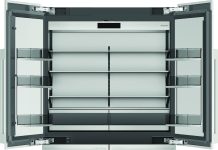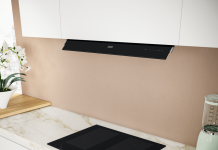The user demands, the household appliance answers. It does it through other users, who contribute, with their experiences, in solving problems they have already faced. It is the core of the SandS project, an acronym for the words Social and Smart, which proposes the electronics use to connect the users of a product and improve its use.
“Optimizing household appliance performances, improving their production cycles, according to single users’ needs. This was the target of our project”. These are the words with which Bruno Apolloni, Professor of Milan University, Department of Computer Science, explains and summarizes the mission of the European project SandS.
Born in 2012 and funded by the European Union, SandS, an acronym that replaces the words Social & Smart, is based on the concept of net infrastructure, aimed at improving the efficiency of household appliances, applying smart technologies. Actually, equipping the machine with a simple electronic board, they make it able to answer the user’s requests, making good use of – and precisely “networking” – the analogue experiences of other household appliance users.

The SandS project involved the collaboration of eight partners, including companies and research bodies. In the specific case, they worked for SandS: AMIS, Slovenian telecommunication company; Arduino, protagonist in the electronic prototyping sector; the Spanish research and technology centre CARTIF; the Spanish enterprise Libelium, which implements technologies for the realization of wireless sensor nets; the Group Gorenje, one of the primary European household appliance manufacturers; the Greek University NTUA (National Technical University of Athens); Milan University, Department of Information Science and the University of Basque Country UPV/EHU. An international collaboration that has enabled the creation, in Spain and in Italy, of two kitchen mockups equipped with washing machine, dishwasher, oven, refrigerator and bread-making machine. Precisely the latter, the machine to knead and to cook the bread, has become the workhorse of the project and it was the protagonist of numerous conferences and events aimed at explaining the spirit and the essence of SandS. The same innovations, however, concern all household appliances: the mockup has recreated an entire smart kitchen, that is to say able to adapt household appliance performances to users’ expectations, for instance obtaining a soft laundry when we wish it, operating the machine in determined time bands or using a precise water quantity.
Concerning the quantity of necessary water for a washing cycle, Professor Apolloni illustrates us how household appliances can become more eco-sustainable thanks to an “intermediate layer”. Besides the machine interface with a smart cloud server, which produces recipes – and then results – in reply to specific demands, for instance how to cook a dish or to wash a determinate clothe, there is also an intermediate layer, called domestic infrastructure, which allows the recipe to suit domestic rules, in terms of sustainability parameters and other general propensities of the user. The latter, in fact, no more plays the role of “consumer” who consumes a product manufactured by others but instead a he becomes a “prosumer”, actively sharing in the production of the object itself. A revolution, the latter, adds Apolloni, connected with web 4.0 one: a web taking into account users’ cognitive aspects, suiting their preferences and needs.
Therefore, considering users and their requests to produce a machine becomes more and more important. In what way, however, do household appliance users, by their nature with a scarce bent for novelties, approach smart technologies? Bruno Apolloni answers this question explaining that some manufacturing companies, already several years ago, had been ahead of their times, connecting the household appliances with the net. Those projects, anyway, had been given up, since the market was not ready to welcome them, yet, and to justify their additional costs. Today, since conditions are more mature and users are used to receiving services and suggestions from the net, further adds Apolloni, instead of inventing new recipes, we should help users to select the most suitable ones for their needs, among the numerous available.

Generally, household appliance users exploit, in fact, a minimum percentage of the machine potentialities, whereas the cloud smartness could help them in overcoming this gap easily. We add to all that other clear advantages of smart technologies, like for instance the remote service. When we have a failure, in fact, we turn to a third part that represents neither the user nor the appliance manufacturer but that will tend to maximise its gains. Using smart applications, on the contrary, the advisor becomes the producer itself that, in this way, will directly solve the problem, making its household appliance more performing and fidelizing customers.
Finally, a question: are smart technologies at the service of household appliances for few privileged people? With a low expense, explains Professor Apolloni, it is possible to equip appliances with an electronic board connecting them with the net. The vision of all the partners of the SandS project and of some manufacturers provides for applying indistinctly the board on all state-of-the-art household appliances and for activating progressively the additional functions in response to market demands. Therefore, also in this case, emerges the importance of the customization and of the adaptation of the technology to the individual’s need.





